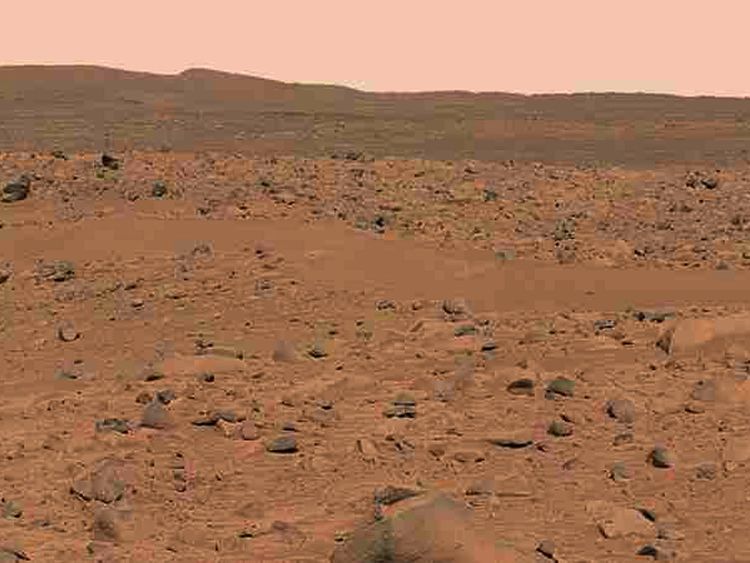Despite enormous risks and a near 60% global record of failure, NASA has landed its InSight rover safely on the surface of Mars.
After seven months and more than 300 million miles, the billion-dollar mission overcame its most challenging hurdle.
InSight had a six-minute window in which to decelerate from just under 13,000mph to 5mph – landing entirely based on autonomous and pre-programmed systems.
It withstood temperatures up to 2,700F (1,500C) – hot enough to melt steel – before deploying its parachute and 12 retro-rockets to gently touch down in an area known as Elysium Planitia.
InSight will need to wait for the dust from landing to settle before it can really get on with business.
The craft's solar array motors will warm up and prepare to unfurl the solar panels. Being completely solar-powered, this is an important activity that ensures the lander has all the power it needs.
The first picture from InSight, taken with a fish-eye lens and through a dust cover, shows the planet's horizon, which NASA said suggests the landing was a success.

Congratulations flooded into the space agency following the success, including from Mike Pence, the US vice president, who celebrated the "incredible milestone" of the country's eighth successful landing on Mars.
An exuberant handshake by mission control staff was caught on camera and has gone viral on social media.
The UK Space Agency also tweeted its celebration and noted that a British-made instrument was on board.
A seismometer – which will "listen" for tremors – was designed by a team at Imperial College London.
It is so sensitive that when the engineers tested it at a lab in Oxford they were able to detect the vibrations from church bells being rung on a Sunday morning.
If the instrument establishes that Mars has the remains of a liquid core it will suggest the planet once had a magnetic field that could have shielded early life – before dramatically and mysteriously weakening.

InSight, which stands for Interior Exploration Using Seismic Investigations, Geodesy and Heat Transport, will help scientists understand what is happening around the core of Mars.
It will help explain how all rocky planets, including the Earth, evolved.
There are significant mysteries here, because while both Mars and the Earth were formed from the same stuff more than 4.5 billion years ago, they are now very different planets.
NASA scientists have seen a lot of evidence that Mars has quakes – known as marsquakes. Unlike Earth, where quakes are caused by tectonic plates, Mars has very quiet tectonic processes.
This means marsquakes are more likely to be caused by other forms of tectonic activity, including volcanism and cracks forming in the planet's crust.

NASA said: "Each marsquake would be like a flashbulb that illuminates the structure of the planet's interior.
"By studying how seismic waves pass through the different layers of the planet (the crust, mantle and core), scientists can deduce the depths of these layers and what they're made of.
"In this way, seismology is like taking an X-ray of the interior of Mars."
Professor Tom Pike, who led the Imperial team, told Sky News: "On Earth our magnetic field is important for protecting us from radiation and also protecting our atmosphere from being swept away by solar winds.
"Mars, although it may have started off in a similar place, is now certainly very different.
"It's drier, it's lost almost all of its atmosphere and there's very little water.
"If life did ever establish itself early on, Mars has been a difficult place for it to hang on."
More from Mars
NASA missions have established that billions of years ago the planet was warmer and wetter, more conducive conditions for life.
In 2020, it will land another rover in an ancient lake bed to directly look for evidence of microbes, dead or alive.
[contf] [contfnew] 
Sky News
[contfnewc] [contfnewc]






